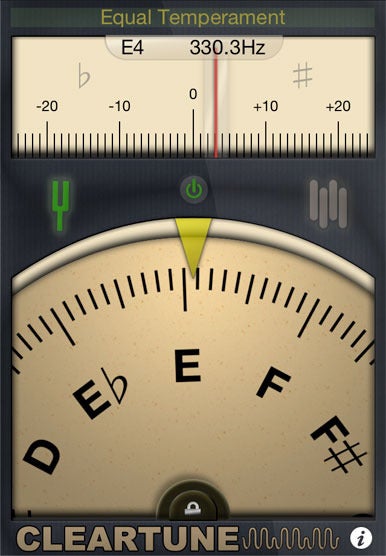Updated on April 8th, 2022
A percussion/drum set has several instruments — bass drum, cymbals, tom, hi-hat, and more. It even includes smaller kettle-shaped drums known as timpani or timps. Belonging to the percussion family, the timpani is a hemispherical drum with a membrane spread across its large bowl. However, many don’t know that timpani are tuned instruments, as they can play different notes. The timpanist alters its pitch by stretching or loosening drumheads, attached to a foot pedal. Basically, it supports rhythm, harmony, and melody, which is a central part of the percussion family. The four sets of timpani have a range of nearly two octaves — from C on 32’’to high A on 23’’. Besides, it can change notes quickly with its foot pedal and this makes it one of the most difficult percussion instruments to play.
To play right and better, timpani is finely tuned. Modern percussionists, nowadays, prefer electronic timpani tuners. So, if you’re wondering what is it and how timpani are tuned using it, then here’s everything that you should know about timpani tuners.
We will share you our recommandation below:
| Product | Picture | Features |
|---|---|---|
| 1.KLIQ MetroPitch - Metronome Tuner
|
 |
|
| 2. Range Technology AFM Disabler |  |
|
| 3.Snark ST-8 Super Tight Clip On Tuner |  |
|
| 4.Korg CA1 Chromatic Tuner |  |
|
| 5.Fender Original Clip-On Tuner
|
 |
|
Let’s delve further to know more.

Electronic Timpani Tuners
Well, in the simplest terms, electronic timpani tuners are nothing but electronic pitch measuring devices. Since tuning timpani is difficult, using an electronic one surely makes it easier. Besides, there are a lot of things to keep in check before tuning timpani. Electronic timpani tuners are pretty good at helping you out with this. These tuners are an invaluable tool that helps in tempering and clearing timpani heads.
The primary reason that makes these electronic timpani tuners accurate is their ability to register even the lowest frequencies, which we are often unable to hear or even consider a pitch. Besides, these timpani tuners give either accurate measurement when the heads are balanced by hand or using a device like TAP Head Gauge. Or else you can even use a head tension device such as a drum dial.
Further, timpanists recommend benchmarking timpani tuning gauges using an app like Cleartune that is available for both Android and iPhone. Cleartune is a chromatic instrument tuner, which you can totally use for timpani, using the in-built mic of your smartphone.
Besides, you can use electronic timpani tuners to measure the pitch only when it’s not in use. That means using it during a live performance or while being played reduces the effectiveness of these electronic timpani tuners. However, there are several reasons behind this. While the sound radiation pattern produced by timpani isn’t direct, the tuner is more likely to pick sound radiation from nearby instruments too.
In addition to this, electronic timpani tuners are specifically designed to measure pitch authentically depending on the spectrum with harmonic series rather than overtone series that has harmonic partials. So, even the pitch with a weak spectrum won’t get registered consistently on an electronic timpani tuner.
Another reason is that above 60 dB, the principal tone of the timpani decays faster, leaving behind the second preferred partial to dominate the spectrum. And this is something that electronic tuners find difficult to catch.
Lastly, the choice of mallets results in producing different masking effects on the spectrum and even emphasizes more on the partials rather than on the principal tone. And this confuses electronic tuners to a great extent.

To put it simply, electronic timpani tuners work great when isolating the principal tone at every lug point. Besides, it also helps in reducing ear fatigue and can discern pitch much better at low frequencies than a human ear can do.
You have to keep in check when tuning a timpani and the most important one is to start with the lowest note. Just make sure that the pedal is at its lowest point with the heel of the pedal way down. And when tuning, you should tighten the drumhead to the desired pitch rather than loosen it. And then try to sing the note you want to tune on the timpani. It’s quite essential for a timpanist to hear the notes or the desired pitch before tuning. For instance, if you want to tune your timpani to D, you must know how D sounds. So, for this, you can use a piano or marimba, play D, and sing along to get the pitch right. Don’t forget to double-check the piano's D before you sing to familiarize the pitch.
Once you know the pitch, strike the drum and quickly raise the pitch without losing a note. Further, strike the timpani's playable spot just once and then slowly push the pedal. You’ll notice a rise in the pitch and as you hear the pitch you sang, you can stop there. Above all, you just have to be careful about striking the head just once, or else you’ll forget the pitch you wanted to tune.
Now that you know about electronic timpani tuners, you can start practicing tuning alongside playing. And for better results, always check your timpani before tuning.
More to read:
Detect Notes on Your Bass Faster With the Best Bass Tuner
Try the GTA+ for Exclusive Benefits on GTA Online
Mix your tracks effortlessly with the Best DAW for Beginners
We hope you love our reviews! For your information, we do earn money from commission in the link in the content! For more information click here!













